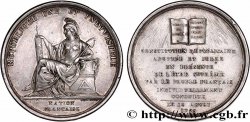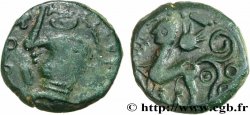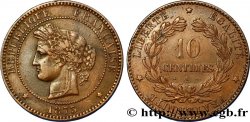fme_916635 - THE CONVENTION Fonte, Hommage à Jean-Paul Marat
250.00 €
Количество
Добавить в корзину

Тип Fonte, Hommage à Jean-Paul Marat
Дата: n.d.
Металл: bronze
Диаметр: 222 mm
Ориентация осей монеты: 12 h.
Вес: 1429,15 g.
Век: lisse
Пуансон: sans poinçon
Комментарии о состоянии
Patine hétérogène avec de hauts reliefs sur le buste. Faible usure. Métal des champs légèrement poreux
Ссылки в каталоге: :
Лицевая сторона
Аверс: легенда: MARAT / L’AMI DU PEUPLE // NE POUVANT / LE CORROMPRE / ILS L’ONT ASSASSINE.
Аверс: описание: Buste habillé de profil à gauche coiffé d’un bonnet phrygien. Pendule et règle à droite.
Обратная сторона
Реверс: легенда: INCUS.
Реверс: Описание: anneau de suspension.
Комментарий
Largeur : 208 mm.
Jean-Paul Marat (1743-1793) est un médecin, physicien, journaliste et homme politique français. Usurpateur de noblesse avant la chute du régime monarchique, il devient député montagnard à la Convention à l’époque de la Révolution. Son assassinat par Charlotte Corday permet aux hébertistes de faire de lui un martyr de la Révolution et d'installer pendant quelques mois ses restes au Panthéon (cf. wikipedia).
Width: 208 mm. Jean-Paul Marat (1743-1793) was a French doctor, physicist, journalist, and politician. A usurper of nobility before the fall of the monarchical regime, he became a Montagnard deputy to the Convention at the time of the Revolution. His assassination by Charlotte Corday allowed the Hébertists to make him a martyr of the Revolution and to install his remains in the Panthéon for a few months (see Wikipedia).
Jean-Paul Marat (1743-1793) est un médecin, physicien, journaliste et homme politique français. Usurpateur de noblesse avant la chute du régime monarchique, il devient député montagnard à la Convention à l’époque de la Révolution. Son assassinat par Charlotte Corday permet aux hébertistes de faire de lui un martyr de la Révolution et d'installer pendant quelques mois ses restes au Panthéon (cf. wikipedia).
Width: 208 mm. Jean-Paul Marat (1743-1793) was a French doctor, physicist, journalist, and politician. A usurper of nobility before the fall of the monarchical regime, he became a Montagnard deputy to the Convention at the time of the Revolution. His assassination by Charlotte Corday allowed the Hébertists to make him a martyr of the Revolution and to install his remains in the Panthéon for a few months (see Wikipedia).








 Cообщить об ошибке
Cообщить об ошибке Распечатать страницу
Распечатать страницу Отправить мой выбор
Отправить мой выбор Задать вопрос
Задать вопрос Consign / sell
Consign / sell
 Информация
Информация















